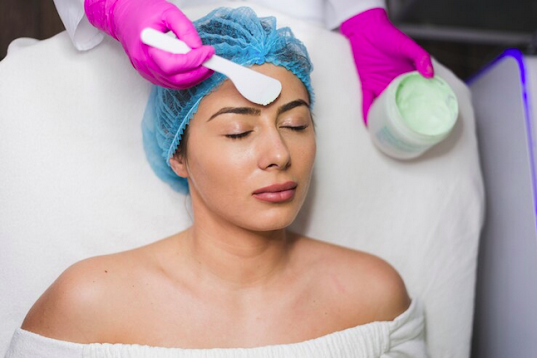Facial Hair Removal for Men: Top Methods and Tips
Introduction:
Facial hair removal is a grooming practice that many men incorporate into their regular routine. Whether it's shaping the beard, removing excess hair, or achieving a clean-shaven look, there are various methods and tips to consider. This comprehensive guide will explore the top facial hair removal methods for men, including shaving, trimming, waxing, and laser treatments. Additionally, it will provide helpful tips for achieving optimal results and maintaining healthy skin.

Understanding Facial Hair Growth in Men:
Facial hair growth in men is influenced by genetics, hormones, and age. Men typically have thicker and coarser facial hair compared to women, with growth patterns varying among individuals. Common areas for facial hair removal in men include the beard, mustache, sideburns, and neck.
Top Facial Hair Removal Methods for Men:
Shaving:
- Shaving is a common and convenient method of facial hair removal for men. It involves using a razor to cut the hair at the skin's surface, providing a clean and smooth shave.
- To achieve a close shave, use a sharp razor and shaving cream or gel to lubricate the skin. Shave in the direction of hair growth to reduce irritation and ingrown hairs.
Trimming:
- Trimming is ideal for men who want to maintain a shorter beard or stubble. It involves using a trimmer with adjustable settings to trim the hair to the desired length.
- Regular trimming can help maintain a neat and groomed appearance while reducing the risk of ingrown hairs and skin irritation.
Waxing:
- Waxing is a semi-permanent method of facial hair removal that involves applying a layer of wax to the skin and then quickly pulling it off, removing the hair from the root.
- While waxing can be painful, it provides longer-lasting results compared to shaving. It's important to follow the instructions carefully to avoid skin irritation and burns.
Laser Hair Removal:
- Laser hair removal is a popular method for long-term hair reduction. It involves using a laser to target and destroy the hair follicles, inhibiting future hair growth.
- Laser hair removal is most effective on individuals with light skin and dark hair, as the contrast allows the laser to target the hair follicles more precisely.
Tips for Effective Facial Hair Removal:
Prepare the Skin:
- Before facial hair removal, cleanse your skin with a gentle cleanser to remove dirt, oil, and debris. This will help ensure a closer shave and reduce the risk of irritation.
- Consider exfoliating the skin to remove dead skin cells and smooth the surface, allowing for a more comfortable hair removal process.
Use the Right Tools:
- Use high-quality razors, trimmers, or waxing products specifically designed for facial hair removal. Dull razors can cause irritation and ingrown hairs, while low-quality trimmers may result in uneven cuts.
- Consider investing in a good-quality shaving cream or gel to lubricate the skin and provide a smooth shave.
Shave with Care:
- Shave in the direction of hair growth to reduce irritation and ingrown hairs. Avoid applying too much pressure, as this can cause nicks and cuts.
- Rinse the razor frequently while shaving to remove hair and shaving cream buildup, and replace the razor blade regularly for optimal performance.
Post-Shave Care:
- After shaving, rinse your face with cool water to soothe the skin and close the pores. Pat your skin dry with a clean towel and apply a gentle moisturizer to hydrate the skin.
- Avoid products that contain alcohol, as they can dry out the skin and cause irritation. Opt for a moisturizer specifically formulated for sensitive skin.
Conclusion:
Facial hair removal is a personal choice for many men, and with the right methods and tips, it can be done effectively and safely. Whether you prefer shaving, trimming, waxing, or laser treatments, there are various options available to achieve your desired look. By following best practices, using the right tools, and taking care of your skin, you can achieve smooth and groomed facial hair with confidence. Experiment with different methods to find the ones that work best for you, and consult with a dermatologist or licensed professional if you have any concerns or questions.



Comments
Post a Comment